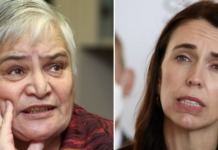On 19 May 2021 the Democracy Project published an article by me discussing how a ‘very bureaucratic coup’ was successfully undertaken to undermine the district health board with the strongest leadership engagement culture of the 20 DHBs responsible for the provision of health services from community to hospital in New Zealand’s public health system: A Very bureaucratic coup: Part Two. Further background was published in an earlier article (15 April): A Very bureaucratic coup: Part One.
The DHB was Canterbury (CDHB), the issue was that the stronger its workforce engagement the more it brought CDHB into conflict with top-down decision-making from central government (particularly the Ministry of Health and the health section of Treasury), and the target for the coup was CDHB’s chief executive David Meates and his experienced senior management team.
Focus of the coup
The focus for the coup was CDHB operational finances, specifically its deficit. The main drivers for deficits in the other 19 DHBs were sustained underfunding for nearly a decade and the financial costs of acute patient demand increasing at a higher rate than population growth (ie, more sicker patients with more complications requiring non-deferral hospital care).
But CDHB was different because of the need to recover from the earthquake devastation in 2010-11. This meant ongoing major capital works including new buildings. New building construction was project managed by the Ministry of Health and significantly delayed. There was also a major political failure by the then National-led government not to accept expert advice that the usual funding formula for DHBs’ operational costs was not suited for natural disasters and that a new more suitable formula should be developed for Canterbury.
The net effect was high depreciation costs that had to come out of CDHB’s operational expenses along with the punitive capital charge and inexplicably lower funding increases than other DHBs. There was a general consensus, including by independent external reviews, that this was the cause of CDHB’s deficits and, once the impact of depreciation and the capital charge ended, its financial position would significantly improve. No other DHB faced anything like this challenge.
The role of Crown Monitor Lester Levy was to discredit this consensus by arguing that the problem was poor financial management by Meates and his team. Levy was appointed in 2019 by then Health Minister David Clark on the formal recommendation of Director-General of Health Ashley Bloomfield but actively promoted by Stephen McKernan, Ernst & Young (EY) senior partner. In the first few months of 2018 McKernan had been Acting Director-General (for four years in the late 2000s he had been Director-General himself). This was followed by the appointment by Minister Clark of a new Board Chair John Hansen who was receptive to singing from the Health Ministry’s song-sheet.
The final piece of the assault was the Ministry-driven engagement of EY consultants, led by McKernan, to do a hatchet job on the fiscal performance of Meates and his leadership team. This is discussed further in an earlier article published by the Democracy Project on 9 February: .
The truth gets in the way
But the assault on the credibility of the financial management of Meates’ team had a major obstacle to overcome – the truth.
First, the Treasury has an independent process called the Investor Confidence Rating (ICR) for independently assessing the capability of DHBs and other public sector agencies to run and manage assets and capital projects. For 2016 Canterbury DHB was assessed as a ‘B’ which was the second highest ranked DHB (Counties Manukau, whose new Chair at the time, one Lester Levy, was attacking the financial management capability of its chief executive and senior management team, scored an ‘A’).
According to releases under the Official Information Act the Health Ministry unsuccessfully attempted to overturn CDHB’s ICR assessment (or alternatively have it not published) because it was contrary to what it had been advising government. The ICR process was again undertaken three years later (2019). Once again CDHB achieved a ‘B’ rating which this time was the highest of all the 20 DHBs.
Second, there are the Crown’s auditors, Audit NZ, whose responsibilities include ensuring that audit results are tabled in Parliament. It is independent of crown agencies and departments. Over the past decade of its annual audits Canterbury was either the highest rated DHB or in the top quartile of DHBs. Given that no other DHB (or indeed any other organisation outside Canterbury) had gone through a decade of natural disasters beginning with earthquakes, this was an impressive performance.
CDHB was rated ‘Good’ for both ‘Management control environment’ and ‘Financial information systems and controls’ for each of the 2016-17, 2017-18 and 2018-19 financial years. For ‘Performance information and associated systems and controls’ CDHB was rated ‘Very Good’ for each of these same years.
When I last wrote on this back in May the 2019-20 audit had yet to be completed and there were indications that Levy was trying to influence Audit NZ’s assessment. I observed that:
“If Audit NZ’s 2019-20 audit of CDHB finances is consistent with previous years, then surely those who have been blackening the reputations of the previous senior management team (and continue to do so) will need to reconsider their positions and the Government reassess their appropriateness to continue in their roles. If Audit NZ doesn’t bow to Levy’s pressure (there is no reason to believe that it will) then his credibility is in tatters.”
Levying Audit NZ attempt
On 29 November 2020 CDHB’s Quality, Finance, Audit and Risk Committee (QFARC) had a regular meeting in which it also considered Audit NZ’s interim audit with its representatives also attending. The obtained minutes show that the meeting ran from 9am to 1.18pm with Levy joining at 11.43am and participated in the discussion on the interim audit suggesting that the discussion lasted for over an hour.
The minutes confirmed that Levy endeavoured to undermine the significance of the Audit NZ’s assessment of CDHB’s financial management under Meates’ leadership. He was clearly concerned as he acknowledged that much weight would be attached to its report. However, rather than a direct attack on the interim audit, he questioned its relevance arguing that the interim audit was ‘high level’ and consequently couldn’t be an assessment of CDHB’s financial management.
His argument was that CDHB had serious financial difficulties [no dispute here but the issue is why]. The minutes report Levy’s expansion of this point as: “…generally speaking when organisations are in difficult financial positions they generally have some issues around controls, and DHBs in Dr Levy’s experience have a lot of issues about controls.”
This was an extraordinary observation for him to make. His only experience in DHBs was the three in Auckland (Waitemata, Auckland and Counties Manukau) where, in all cases, he was the Chair. When Levy began as their Chair all three had healthy financial surpluses. When he left they all had large deficits. According to his own words, he bore responsibility for this outcome. Words like pots, kettles and black come to mind.
Audit NZ’s representatives were diplomatic but firm in their response to Levy’s assertion. In respect of control measures the minutes report them advising that:
“…they are looking at whether the DHB has in place the policies and procedures to run the organisation. Whether appropriate delegated authorities have been set; whether the delegated authorities are complied with; whether the monthly accounts are being prepared, and prepared in a robust way such that they are done timely, done relatively accurately, such that those accounts can be relied on during the year to make decisions and steer the organisation in the right direction. Audit NZ looks at the controls around the surveillance over any need to update those policies and procedures. That is control to Audit NZ for the purpose of its audit.”
They added that Audit NZ also looked at probity against the criteria set by Parliament for crown entities and had no concerns.
Levy’s defence was to argue that it was “an interpretation issue” in the context of how the final audit might be read by others. But, while he endeavoured to diminish the relevance of the interim audit because it was ‘high level’, at no point do the minutes record him as saying what the ‘lower level’ concerns over CDHB’s financial management were. He had every opportunity to do so.
The fact of the matter is that the substantive attack on CDHB’s financial management came from EY consultants in their hatchet job; that CDHB employed too many nurses. This conclusion was based on EY’s misuse of national staffing data. It is now a laughable claim given the severe nursing shortages in DHBs highlighted by the bitter collective bargaining dispute with nurses represented by the NZ Nurses Organisation. Nursing shortages have even been acknowledged by the health minister.
Audit NZ advised that its view was that CDHB was “pretty clean”. It had “…gone through CDHB’s financial controls and IT general controls, which have been assessed as effective for the purposes of the audit.”
Going to the heart of the controversy (and the accusations of Levy, Health Ministry and EY consultants), a QFARC member queried “…whether the $180M deficit for the last year was caused by the CDHB having poor financial controls.” Audit NZ responded no. It added that in the past it “…had looked at the number of people with authority to procure on behalf of the DHB, but that is a balance of efficiency and effectiveness.”
A further question asked “…if it was correct to say that [the Audit NZ] team have looked at the internal control system, have deemed it to be effective, properly designed for the type of organisation, and that the controls are effective and being complied with.” In response Audit NZ “…confirmed, yes that was right.” Pointedly the questioner then added that Audit NZ had reached a pretty important conclusion.”
At this point it wasn’t difficult to visualise the egg running down Levy’s face. Previously he had described CDHB’s finances as being in a “terrible shape”. In contrast, the QFARC minutes reveal that Audit NZ’s interim report reconfirmed that that CDHB had in place effective controls.
Slam dunk
The final completed audit for the financial year ended 30 June 2020 has been obtained. In the context of the dirty politics of New Zealand’s health system leadership, while written objectively, it has the effect of slam dunking Levy’s (and EY’s) accusations.
The audit begins with noting that the new acute services block (Waipapa; formerly known as Hagley) had been transferred from the Health Ministry to CDHB in November 2020. In this context it observes that “There was a significant delay in completing the hospital [Waipapa]” and that the cost was $90 million over budget. Unstated is the fact that this contributed to the significant depreciation costs that CDHB was unfairly forced to incur which had a big impact on its deficit.
Later on (p.7) the audit confirms that “Canterbury DHB’s financial position has been significantly impacted by the rebuild phase post the Canterbury earthquakes.” In other words, Audit NZ concurred with the consensus of previous external reviews and CDHB (prior to the attempt of the Crown Monitor, Health Ministry and EY consultants to scapegoat the former senior management team).
Even more significant is Audit NZ’s grading of CDHB which also includes the previous 2018-19 financial year. The following table summarises its conclusion.
Environment, systems and controls for measuring financial and service performance
| Year ended 30 June 2020 | Year ended 30 June 2019 | |
| Management control environment | Good | Good |
| Financial information systems and control | Good | Good |
| Performance information and associated systems and control | Very good | Very good |
For context Audit NZ has four assessment grades of which ‘Very good’ and ‘Good’ are the highest. Outlined in Appendix 2 of the audit are descriptions of these grades:
| Very good | No recommendations for improvement |
| Good | Some recommended improvements |
| Needs improvement | Major improvements should be made “at earliest reasonable opportunity” |
| Poor | Fundamental improvements required urgently |
If the claims of the Crown Monitor, Health Ministry and EY consultants were correct then the audit should have graded CDHB as either ‘needs improvement’ or ‘poor’.
Reputation, tatters and accountability
Where does this objective independent audit leave those that tried to argue that the financial difficulties of CDHB were due to its former senior management team rather than the consequences of the earthquake devastation made worse by Health Ministry behaviour and project management?
The best that CDHB has been able to achieve under its current leadership is a bigger deficit ($4 million higher) for the 2020-21 financial year than the previous (Meates led) senior management team’s recommended (and adopted) deficit level of $145 million. Further, it was nowhere near the Lester Levy’s recommended $90 million deficit.
In contrast the allegedly financially inept Meates team delivered on its Board agreed financial budgets in 9 out of the previous 10 financial years. The exception was a Board approved $4 million mental health overspend to prevent a full-blown mental health crisis in Canterbury due to the earthquakes that was being actively undermined at the time by the Health Ministry.
In fact, Audit NZ’s reports on CDHB have produced remarkably consistent results for a decade and in the highest quartile of DHBs and other public institutions.
If one can’t trust Audit NZ’s financial audits, who can you trust? It isn’t just Lester Levy’s reputation that is in tatters. It is also those who commissioned and supported his approach. Reputational tatters occurs when one reaps what they sow.
But will those responsible for this disgrace ever be held accountable for their actions – you betcha-not! There has been too much complicity with this dirty politics to allow accountability.
Ian Powell was Executive Director of the Association of Salaried Medical Specialists, the professional union representing senior doctors and dentists in New Zealand, for over 30 years, until December 2019. He is now a health systems, labour market, and political commentator living in the small river estuary community of Otaihanga (the place by the tide). First published at Democracy Project






Fascinating! And I read your Two Part story too. Rivetting scandal on wasting good taxpayer (our!) money. Mate, you should sell it as a script to Netflix and make yourself a million.
A great read. The health system will always be in catch up mode. Government has a health budget and any DHB will have their own. The government’s budget will always be lower than the DHB budget because there will never be enough money. The government will then discredit any DHB that can’t keep to the Government budget regardless of how rundown the hospital gets. It’s never going to work and what happened in Canterbury was a disgrace. I believe less DHB’s is the way to go however we need to have an honest grown up chat about how much we’re prepared to spend on health considering our population. We don’t have the tax take required to maintain what we’re trying to achieve. At present there’s no happy ending here.
Oh but we do have the money.
If primary healthcare and medicines we adequately funded there would be up to $10 less spent on hospitalisations and up to $20 less spent on social costs for every dollar that is currently not spent on medicines alone. So to say we have not got the money is crap when similar oecd countries of the same size or close to spend up to 200% more on medicines in their health budgets alone than we do when they have around the same GDP says we do have the money. It is just that the middle class and swing voters choose not to for fear of 1 cent more tax or whatever.Well covid 19 has brought all the chickens home to roost and shown what their actions have cost. Now they are freaking out over the possible deaths caused by this epidemic caused by this blatant under funding since the Crown Health Enterprises were instituted and the downstream crap since. So don’t tell me we don’t have the money it is all BULL>>>>>>>.
Geoff I’ll go with the first part of your argument in that if we spend more on medication we will save on hospitalisation. However, I don’t buy the rest. Other countries of a similar size only spend a little more gdp on health and we don’t know how much of that gdp they have to spend on their health infrastructure. Their hospital systems may not be run down as ours is. If your hospitals are flash you can spend more on medicine. Maybe you know those figures because I don’t.
https://www.medicinesnz.co.nz/fileadmin/user_upload/Medicines_Landscape_2020-21_FINAL.pdf
Fair enough Geoff. If we spend more on medication we can save millions on hospitalisations. That saving can help pay for the run down asset and underpaid nurses etc. it’s still a big ask. I’m not against spending more on health but it’s up to the people to choose where their dollar is spent.
Unfortunately you can’t trust audits much anymore, the GFC showed us that.
NZ needs a completely re-set, but who to push it, the Greens are too woke and their big push seems to be make NZ the free gender reassignment of the world to flock and save the renters who seem to have been better off before they started their ‘help’…. Labour is neoliberal, Natz is ever more neoliberal, ACT is even more neoliberal than them all… the Maori Party seems only concerned with itself and Te Reo, NZ First has become very opportunist with little interest in their original policies, with Shane Jones and was originally the party for the retired.
Labour are winning so far, because they are the best of a poor set of choices, and amongst all the muddle, they probably want the best for the country.
Whatever your political choice, the vast majority of NZ want a free, well run, fully functioning, world class, health care system here.
savenz
Neo liberal economics is NZs ‘cargo cult’ – the rich people from overseas with better everything including theories, plans, models, confidence and technology should be deferred to all the way. Native wit and wariness be abandoned here in this pile of old clothes, slightly smelly from human detritus and bulging with cardigans and walk shorts!
Weirdly NZ stil has one of the most efficient public health systems in the world, if only the didn’t do neoliberal screw ups all the time, we could have been number 1, and that should be the governments goal. It is achievable if they stop the Lester Levy type management.
“Whatever your political choice, the vast majority of NZ want a free, well run, fully functioning, world class, health care system here”.
Don’t write the Greens off on a health reset policy, after all It was the Greens who went to the last election with a rebooted ACC policy .
I know for a fact that policy is still being worked on, along with other health issues that were discussed at their summer Gathering because I was there and put some forward along with other people’s ideas.
From what I am hearing in various discussions health is going to be a major issue next election because people are fed up with the same old same old crap excuses and the Medicines budget will be a deal breaking for a lot of people .
I for one won’t be giving my seat vote to my current local mp unless I see movement on that alone .
I dare say a lot of others will be doing the same.
Great article Ian. These Ministry and E&Y clowns are fuckups of the worst sort.
I’m frankly astonished that the Ministry delivered the much delayed Waipapa hospital $90 million over budget. This is of course immediately going to impact CDHB’s finances through depreciation charges. I think the current rate is 6%, so the Ministry has immediately added $5.4 million per year to the CDHB deficit, just to pay this ridiculous tax back to the government.
These fools should not be allowed anywhere near the reigns of power.
You read this and see the way the dept of Education works and then you ask the question do we want 3 Waters as another Government entity and the answer has to be no way .
Agreed Trevor
The net effect was high depreciation costs that had to come out of CDHB’s operational expenses along with the punitive capital charge and inexplicably lower funding increases than other DHBs. There was a general consensus, including by independent external reviews, that this was the cause of CDHB’s deficits and, once the impact of depreciation and the capital charge ended, its financial position would significantly improve. No other DHB faced anything like this challenge.
The role of Crown Monitor Lester Levy was to discredit this consensus by arguing that the problem was poor financial management by Meates and his team. Levy was appointed in 2019 by then Health Minister David Clark on the formal recommendation of Director-General of Health Ashley Bloomfield but actively promoted by Stephen McKernan, Ernst & Young (EY) senior partner. In the first few months of 2018 McKernan had been Acting Director-General (for four years in the late 2000s he had been Director-General himself). This was followed by the appointment by Minister Clark of a new Board Chair John Hansen who was receptive to singing from the Health Ministry’s song-sheet.
Shakespeare wrote a sweeping saga to fit this one with underhand stabbings behind the arras. It is almost like the stupid Charge of the Light Brigade – the unswerving commitment to a Plan without regard to outcomes or straightforward concern for a city in ruins and citizens in trauma. There must have been something clouding judgment in heaps.
I note Lester Levy has a triumphant tone and published about his methods, (He began life in South Africa which breeds confident men it seems. I’m interested in formative events.)
This is his bio. He certainly gets around – I see his involvement in Tonkin and Taylor which is at present advising many Councils on sea level rise and effects.
Professor Lester Levy, CNZM – Chair
Professor Lester Levy, CNZM, MBBCH, MBA, FNZIM, has chaired the HRC since 2015. He is also the independent chairman of Tonkin + Taylor, strategic advisor on the future of healthcare to the Southern Cross Health Society and Professor of Digital Health Leadership at Auckland University of Technology’s Faculty of Health. Lester is also the Ministerial appointed Crown Monitor to the Canterbury District Health Board.
Lester is a graduate of Medicine, holds an MBA, and has extensive management and governance experience in both the public and private sectors. He was previously chairman of the Auckland, Waitemata and Counties Manukau District Health Boards as well as Auckland Transport and chief executive of the New Zealand Blood Service and the Mercy Ascot group of hospitals (of which he was a founder). Lester is best known for leading a number of organisational performance transformations as a chief executive, entrepreneur and chairman, in both the public and private sectors.
Previously seconded to the Department of the Prime Minister and Cabinet as an advisor, Lester has been awarded the prestigious King’s Fund International Fellowship from the King’s Fund in London as well as being made a Fellow of the New Zealand Institute of Management. He was also appointed a Companion of the New Zealand Order of Merit (CNZM) in the 2013 New Year’s Honours List for services to health and education.
HRC – Health Research Council (find out more about this health influencing body.
30 years of HRC
For 30 years, the Health Research Council has funded research that has saved lives and changed practice. in this video series created for our 30th anniversary, we share some of the research highlights that have made a difference here and internationally. https://www.hrc.govt.nz/making-difference/30-years-hrc
Comments are closed.